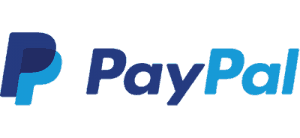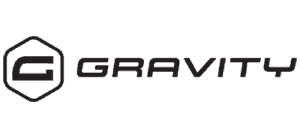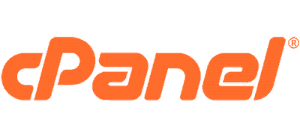A Simple Lead Generation Strategy for Google AdWords
We all want to generate more leads, but getting started with paid ads can be scary. After all, you don’t want to waste your ad budget on pointless clicks.
One of the most exciting things about running a business is learning the reasons some companies are never successful while other businesses make a wildly successful run in the space of a few short years.
It does make you wonder, when it comes to pay-per-click digital advertising, what are big businesses doing that you’re not? The answer is simple; big companies create and name sub-pages with a specific service they offer, and market each landing page from direct, relevant keywords using Google AdWords.
This allowed a direct link between search phrase of the potential customer, and the response from the business to say “yes, we offer the goods and services you need”.
How do you produce similar results?
By setting aside just a few hours, you can get started generating AdWords leads with this super simple lead generation strategy. Even if you are spending just £20 a day, you can generate leads on your first try if you get the basics right.
These visitors will be more prepared and qualified in comparison with other paid advertising channels like Facebook or Instagram. Using those, you’re getting less qualified traffic, and it takes more time to nurture up your leads so it’s a longer time span until they are ready to buy.
In this post, I’ll explain a high converting marketing strategy for Google Ads, and how to discover highly relevant keywords for your business.
Let’s get started.
What Is the Simplest Lead Generation Strategy for Google AdWords?
Looking back at my opening statements about how big businesses and competitors able to turn one thousand monthly site visits into vast sums of profit every year, I feel I should reiterate, just incase you skimmed it.
It’s through keyword targeting.
They weren’t just using any keywords though, but “high intention” keywords. It’s important to note there’s a difference between high intention keywords and low intent, or research intent keywords:
- High intention keywords often include the term “service” in them. The intention is that the customer is searching for a service so they can schedule a consultation and make a decision on how to proceed. Examples of such keywords include “road bicycle repair service”, “house cleaning services”, “website design services” and other similar intent-based searches.
- Low intent keywords are often exploratory in nature.
- Research intent keywords are centred around learning more about a company or product, such as a how-to search.
The addition of location identifiers (specifics) to your high intent keywords can help your local SEO. When searching in the Google search bar, or using the Google map and Places function, users will see high-intent keywords right away.
To summarize the problem: a high intent keyword is any keyword that can lead to a commercial transaction.
How to Discover Relevant “High Intention” Keywords
Now that you know what high intention keywords are, how do you go about finding them? And how do you make sure that those questions are about the ones you need to answer?
Here’s a two-pronged approach you can take.
Step #1: Think of the words that will motivate you…
Use tools like Google Keyword Planner, Google’s search keyword tool through AdWords, and Google Trends to see which keywords are popular. If you are concerned about price, just type the keyword plan in Google and you will see the daily volumes.
Step #2: Build landing page funnels that make sense
Now it’s time to connect the dots from your keywords to Your Landing Pages.
Personally, I’ve found this step works best if you arrange your landing pages based on the levels of your sales funnel.
For instance, informational pages should be at the top of the funnel. These fill in leads looking for information about your products or services.
Next are your commercial pages, which are starting to drive the sale. There should be a separate page with service features, one with a form, another in eCommerce, and a third with the product information.
AdWords Campaign Best Practices to Maximize Conversions
Make Sure the Landing Page Copy Aligns with the Ad Copy
It’s important that ad copy and landing page copy target the same objectives, and that they’re clearly associated. The copy doesn’t have to be the same, but the intent should be the same; i.e., to fix a plumbing issue.
Split Test (A/B) Creative Ads
When it comes to tweaking your ads, you don’t want to A/B test more than three different ad variations at once.
Why?
With such a limited budget, are not currently going to be able to get quite of high volume of impressions. If the best performing info should be able to recognize in a brief period of time.
That said, if you spread yourself too thin with too many ads, it’ll be harder to tell which one works the best statistically.
Tests determine what will successfully run ads. Most tests need a sufficient amount of data to establish whether they will be effective. Typically, this means finding at least 300 conversions or clicks, authority sources add.
Adobe’s company-wide company used this technique to determine which versions of their landing pages converted for the most customers and made the maximum amount of revenue.
To A/B test multiple things for AdWords, AdWords users can toggle to “advanced settings.”
Use Add-ons
Think of an ad extension as a marketing tool. By adding links, images, or contact information, the ads you create will pop out in places you didn’t know you could advertise.
Leads can learn more about a company’s target audience through what is known as an added ad extension. If someone visits your site, they may contact you for a consultation. Simply adding these extensions also increases potential traffic.
Conclusion
If you have a micro budget, you are going to strictly monitor your expenses. By using a Google AdWords account, you can generate more leads and get a better return on your ideal acquisition budget. You can focus your energy on developing a product or service that will determine your AdWords ROI.
If you understand how to find and use relevant, high intention keywords, you can target leads and drive more conversions on your first try.
To review:
- High intention keywords are those that drive sales.
- Leads searching for these keywords are usually ready to buy.
- Compare these to low intention keywords, where a lead may simply be browsing around.
- Relevancy is crucial in keyword selection.
- Use Google Trends, Google Keyword Planner, and AdWords itself to see which keywords in your niche are trending.
- Add your keywords to your landing page tags to attract more traffic to these pages.
- Keep your landing page copy and ad copy similar to promote the same cohesive message.
- It’s better to A/B test three pages than 10. This saves you money and prevents you from spreading yourself too thin.










